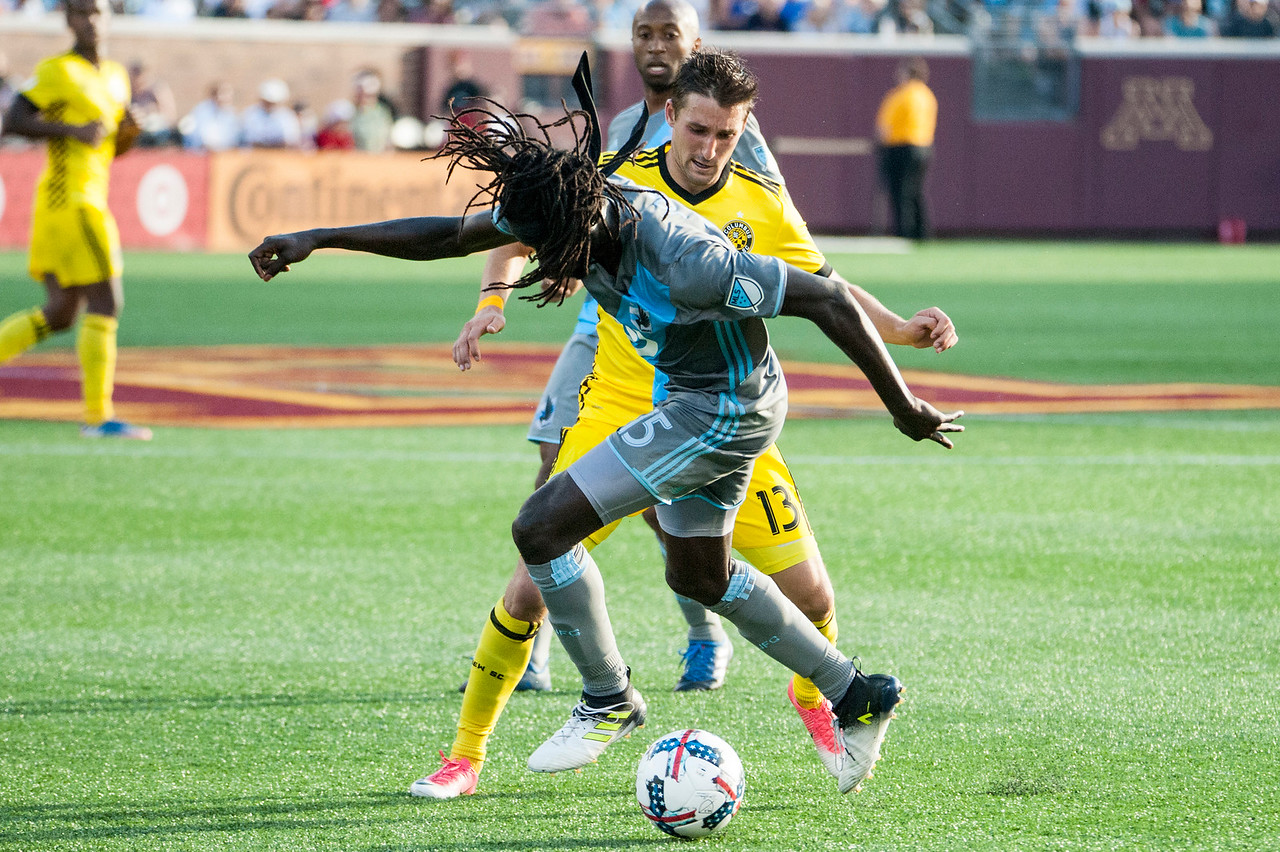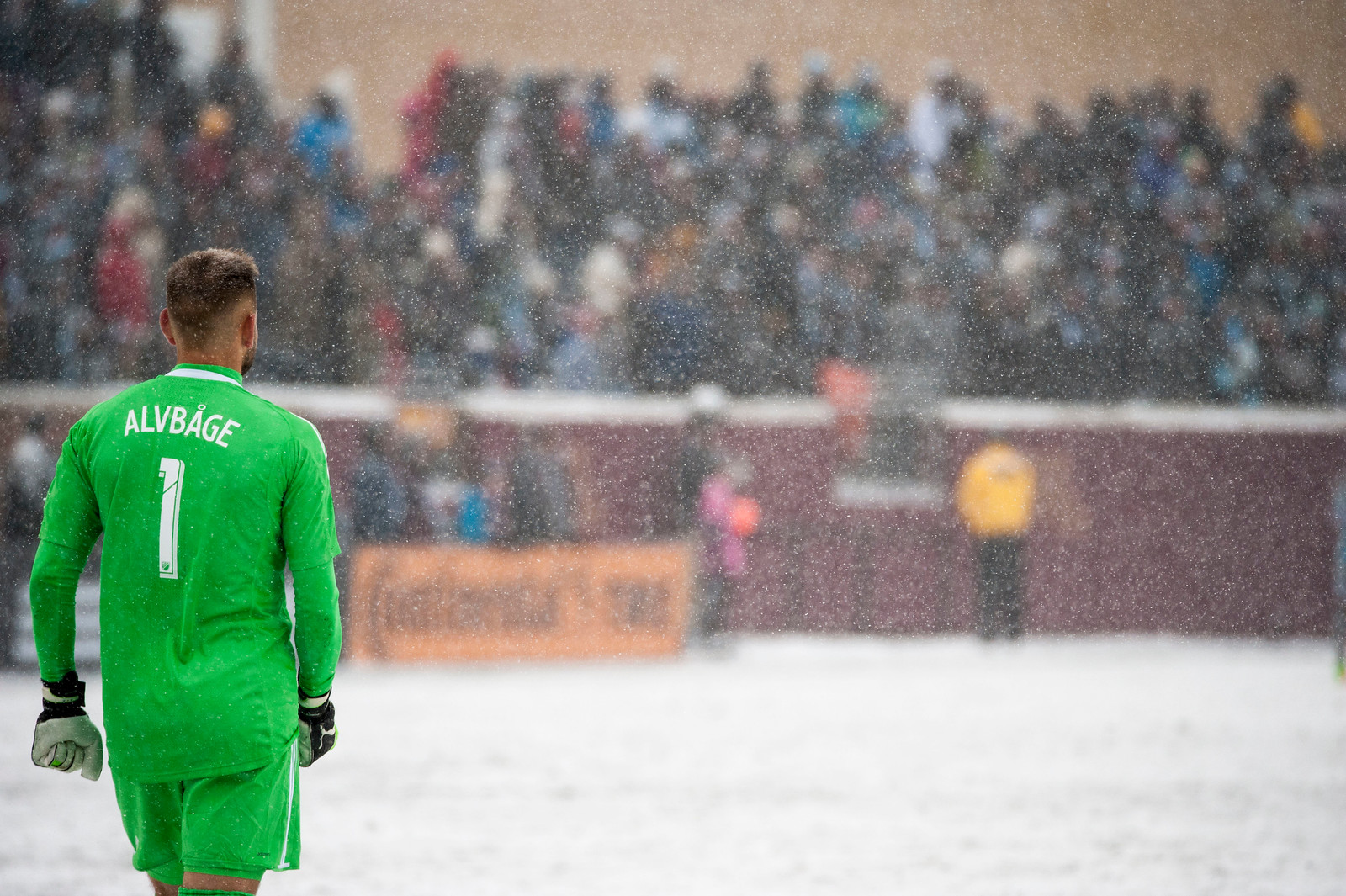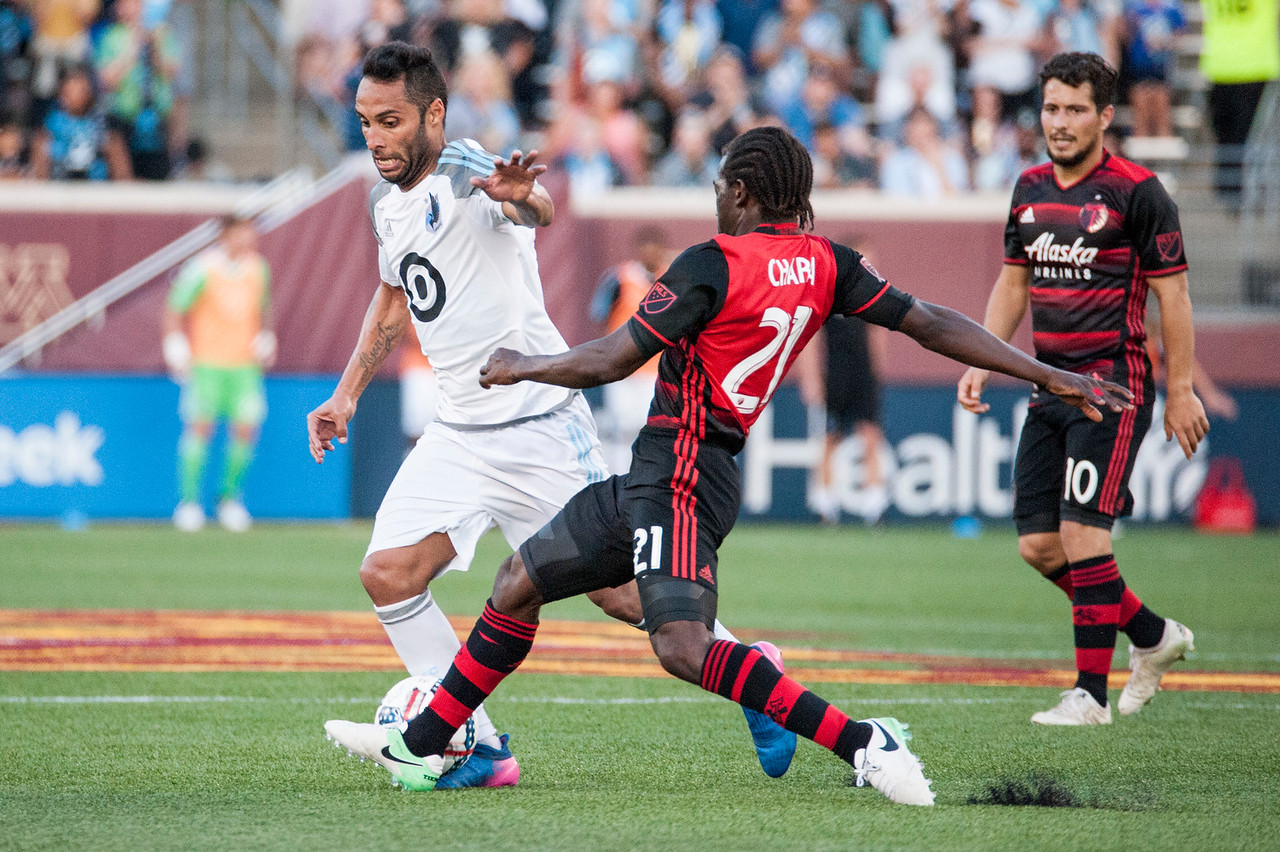The dust is still settling on the summer (secondary) MLS transfer window. After yesterday’s moves Minnesota can still snap up free agents, but there won’t be any international (inbound) signings. The 2017 squad, then, looks to be mostly solidified. So what have we learned after the transfer window?
Lesson one: the great Scandi-sotan experiment is over
When Manny Lagos went across the ocean to scout Scandinavia, no one knew it would be as productive as it turned out. The Loons eventually signed Josh Gatt, John Alvbåge, Rasmus Schüller, Bashkim Kadrii, and Vadim Demidov (they also looked closely at Muhamed Keita, who has now signed with the New York Red Bulls).
Gatt left the club along with Mohammed Saeid in the lopsided trade with Colorado for Sam Cronin and Marc Burch. Alvbåge and Schüller left during this transfer window. The club declined to extend Alvbåge’s contract as he was usurped by the cheaper Bobby Shuttleworth (who also doesn’t require an international spot). Schüller was sent out on loan to his club from 2012-15, Helsingin Jalkapalloklubi. The Loons appear to not want to fully cut ties with him, but after recovering from a few injuries, they felt he could get more playing time back in Finland.
The two remnants of the Scandinavian cull are Vadim Demidov and Bashkim Kadrii. Demidov’s high wages and three-year guaranteed contract make him an albatross that may hang upon the Loons’ necks for some time, but he will not play another match for the club. This leaves only Bashkim Kadrii, perhaps the most confusing case for Minnesota. Kadrii is obviously talented, but has not been able to push for a regular position with the team. Whether this is an attitudinal problem, a sign that he has not fully recovered from injuries, or something else, his signing has not worked out.
Lesson two: you can never have too many wingers
The Loons’ flashiest pick up during the transfer window was their trade for Columbus Crew’s Ethan Finlay. Though Minnesotan-born (Duluth), Finlay considers himself a Wisconsin boy, so use that information however you wish. Finlay does, however, come from the same Creighton pipeline that brought the brothers Kallman and Alex Kapp (more on him later).
Finlay had a banner year in 2015, scoring 10 goals and notching 13 assists, but has since failed to recapture that season’s magic. He possesses an immense amount of speed and could perhaps signal a shift (or allow for a move to) a more counter-attacking tactical approach for Minnesota United. Witness his remarkable run and assist for a counter against the Chicago Fire.
Along with Finlay comes the young Costa Rican left winger, José Leitón. The Ticos prospect moves to Minnesota on loan with a purchase option on the end. Leitón’s story feels almost cliche in its rags to riches narrative, but calling it cliche dismisses how amazing it is.
For obvious reasons, we know far less about Leitón than Finlay. However, one source said that Leitón came highly recommended from his compatriot Francisco Calvo. Leitón made his international debut for Costa Rica last month in the Gold Cup, playing 10 minutes against the United States.
With these two wingers signed at the tail end of the transfer window, it is easy to forget that Minnesota had already signed another winger, the Scottish left winger Sam Nicholson. Nicholson has already made a couple of appearances to mixed reviews, but certainly brings pace to the team.
What remains unclear is just how all these wide players can be incorporated into the same squad: Miguel Ibarra, Bashkim Kadrii, Kevin Molino, Abu Danladi, and Johan Venegas join these three new recruits as fighting for these spots. Likely Molino and Venegas will be employed in the central No. 10 role (where Molino in particularly seems less effective).
This is bad news for fan favorite Miguel Ibarra, who has regularly been called out by Adrian Heath for not working hard enough. It is unclear if this means that the team is looking to offload Ibarra, but it does mean that Ibarra’s fight for a starting place just became a lot more difficult.
Lesson three: the midfield is still a problem
Minnesota shipped out Rasmus Schüller, leaving them with Collen Warner and Collin Martin as their midfield backups. Warner was originally signed as more of a defensive midfielder, but is far happier pushing forward as a box-to-box man. Martin has seen a little more time recently and, though he lacks Ibson’s genius, has a good eye for a pass going forward.
When Minnesota brought in Sam Cronin, he seemed the perfect foil for Ibson. He offered the bread to Ibson’s butter, the ground to his current, the defensive stability to a roaming playmaker. The result was that Minnesota stopped hemorrhaging goals as it did at the beginning of the season.
However, the Ibson/Cronin tandem continues to be a liability as we saw recently in the 4-0 loss to the Seattle Sounders. A large number of Minnesota’s goals allowed have come in the counter attack. Ibson joins the marauding Loons attack, the team gives up possession, and suddenly the opposition can slice them open and head toward goal with just a few passes.
In the time since the Cronin trade, Minnesota has continued to concede too many good scoring chances. Minnesota allows about 1.85 expected goals (xG) per game (and this number is only counting the matches since Cronin arrived). This is the highest rate in MLS (Montreal allows the next most opportunities with 1.64 xG per game).
This isn’t due to better opponents in the Western conference. Minnesota consistently allows opponents an additional 0.5 xG above that team’s average. This is the worst in the league (Montreal is the second worst with a +.26 xG). In contrast, Kansas City is the best team on this stat and keeps opponents about 0.25 xG below their averages. If it feels like every team seems to have a good day against the Minnesota defense, there is something to it.
It’s important to score goals. It’s also important to prevent opponents from getting good scoring chances. So far this year, xG (against) has a stronger correlation with league points than xG (for) (0.62 v. -0.75 respectively).
The Loons need to address their defensive problem with the midfield (including making sure they are signing attacking players who are good at playing the other side of the ball). Minnesota could have desperately used a Cronin backup or, perhaps, an option to play with two men who can shut down the midfield.
Lesson four: defensive reinforcement may not have been enough
The Loons continue to careen toward a league record for worst defense, but only made one defensive signing during the window. Michael Boxall came in from the South African club SuperSport and was immediately thrown into action as the team struggled without Francisco Calvo or Jermaine Taylor.
Boxall still needs time to bed in, but Heath preferred him over one of this year’s revelations, Brent Kallman. Whether this is a signal that Boxall is the new preferred partner for Calvo or not, there is now more competition with the spot. Coming off a Best XI Gold Cup, Taylor could also once again start pushing for a place.
With Bobby Boswell going to Atlanta United and Aaron Maund to Vancouver, one can’t help but wonder if those signings would have helped shore up the defense more than Boxall.
The team’s most glaring need is for a left back. With Marc Burch injured, Ismaila Jome appears to be favored over Justin Davis, but the team lacks a strong option in that position. Even before Burch’s surgery, he was practicing infrequently as he managed a few recurring problems. Despite this, the Loons did not end up snapping up any left backs, leaving them to make due with what they have for the rest of the season.
Lesson five: This isn’t a lesson, but we signed a goalkeeper
Perhaps the most under-the-radar move for the Loons was the pick up of Alex Kapp in goal. With Alvbåge sent back to Sweden, Minnesota needed a third goalkeeper, and Atlanta did not sign Kapp after they drafted him.
Just how good of a prospect Kapp is remains to be seen. However, the other two goalkeepers are 30 (Shuttleworth) and 28 (McLain) years old. Kapp comes in as a 22-year-old who can learn from goalkeeping coach Marius Røvde and develop.
FiftyFive.One is now on Patreon. Do you like the independent coverage of soccer news from Minnesota and beyond that FiftyFive.One offers? Please consider becoming a patron.




Leave a Reply